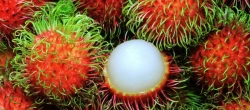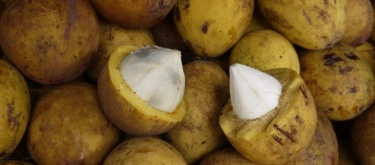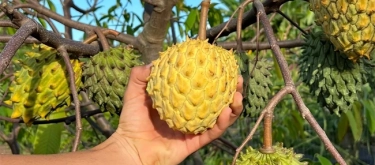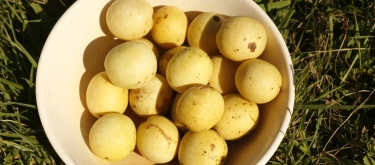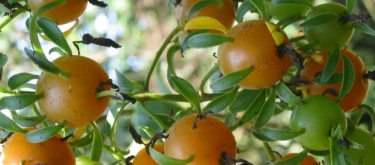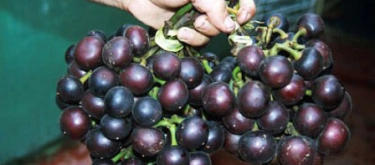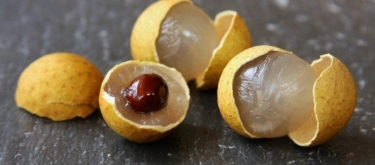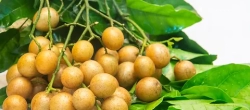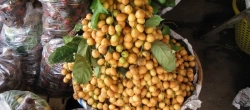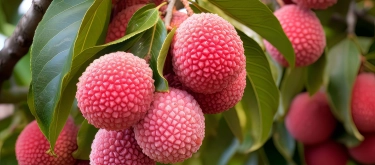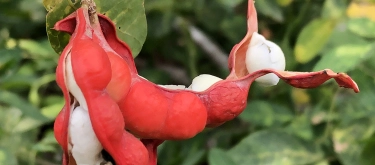Pitomba: Taste Profile, Aroma, Benefits and Health Risks
Pitomba (Talisia esculenta) is a tropical fruit indigenous to the Brazilian Amazon and northeastern regions of South America. Traditionally valued for its delightful sweetness, delicate aroma, and nutritional properties, pitomba has been appreciated for generations by indigenous and local populations. Although less recognized internationally, this small, flavorful fruit has garnered increasing interest for its culinary versatility, nutritional richness, and potential commercial appeal.
Pitomba is generally safe, though limited allergenicity data suggests caution for individuals sensitive to related tropical fruits, especially lychee, longan, or rambutan. Those prone to digestive sensitivities should consume moderately due to mild acidity. Pitomba is safe in moderation during pregnancy.
What does Pitomba taste like?
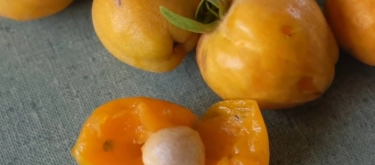
Complete Sensory Description:
Taste
Pitomba fruit features a pleasantly sweet, mildly acidic flavor with refreshing tropical fruitiness. Distinct flavor notes include hints of lychee, apricot, and subtle citrus undertones, providing a delicate yet memorable taste.
Aroma
Pitomba’s aroma is delicately fruity and slightly floral, characterized by notes reminiscent of lychee blossoms, fresh apricots, and gentle citrus fragrances, creating a pleasingly mild tropical bouquet.
Texture
The fruit has a thin, leathery outer skin that is easily peeled, revealing a juicy, translucent pulp. The inner pulp texture is tender, gelatinous, and slightly fibrous, similar to lychee or longan, surrounding a single large, smooth seed.
Appearance
Pitomba fruits are small, typically 2–3 cm in diameter, round or slightly oval-shaped. The external color ranges from yellow to pale orange when ripe. Internally, the pulp is translucent white to pale ivory, enclosing the central seed.
In-depth Flavor Analysis:
Pitomba’s delicate yet appealing flavor arises from its balanced sugar content, mild acidity, and specific aromatic compounds:
-
Sweetness Profile: The sweetness primarily derives from fructose and glucose, offering gentle, honeyed notes similar to lychee or ripe apricot, not overly intense but distinctly pleasant.
-
Acidic Balance: Moderate acidity, mainly from malic and citric acids, provides refreshing tartness, enhancing the fruit's flavor complexity. This gentle acidity prevents excessive sweetness, resulting in a harmonious taste.
-
Aromatic Complexity: Aromatic volatile compounds including ethyl acetate, geraniol, and linalool deliver fruity and floral nuances reminiscent of lychee blossoms and apricot. Subtle terpenes add depth, accentuating the fruit’s delicate tropical character.
-
Environmental Influence: Flavor intensity and aroma profiles vary with ripeness, climate, and cultivation practices. Fruits grown in optimal tropical conditions exhibit enhanced sweetness, balanced acidity, and increased aromatic complexity.
Varieties and Culinary Applications:
Pitomba typically does not have widely distinguished commercial varieties; however, regional differences in size and flavor intensity occur. Culinary applications include:
- Fresh Consumption: Commonly enjoyed fresh, often peeled by hand, providing a refreshing snack.
- Beverages: Widely used in fresh juices, smoothies, or traditional fermented beverages, enhancing natural sweetness and mild aromatic qualities.
- Desserts and Preserves: Frequently incorporated into jams, marmalades, sorbets, fruit salads, ice creams, and sauces due to its appealing sweetness and aroma.
Selection and Storage:
Select pitomba fruits with firm, smooth, yellow to orange skins free of blemishes or mold. Fruits should feel slightly yielding when gently pressed. Pitomba is perishable; thus, ripe fruits should be refrigerated in breathable containers and consumed within a few days. For extended storage, freeze pulp promptly after removing seeds.
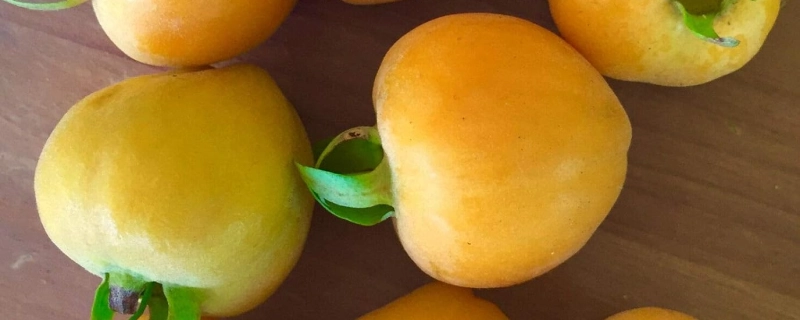
Nutritional Insights:
Pitomba is nutritionally beneficial, providing vitamin C, dietary fiber, antioxidants, and minerals like potassium, calcium, and phosphorus. Regular consumption may enhance immune function, improve digestion due to fiber content, and contribute to cardiovascular health through antioxidants and potassium. Its vitamin C content helps combat nutritional deficiencies, particularly benefiting individuals with weakened immunity or susceptibility to infections.
Expert Insights & Culinary Tips:
- Flavor Pairings: Pitomba’s gentle sweetness pairs beautifully with other tropical fruits like mango, pineapple, and passionfruit, as well as dairy products such as yogurt or ice cream.
- Preparation Recommendations: Chilling pitomba fruits before serving enhances their refreshing quality. Culinary experts recommend combining pitomba pulp with mildly acidic or creamy ingredients to accentuate its subtle flavor profile.
- Seed Management: Always remove and discard the seed, as it is inedible and can adversely affect texture in culinary preparations.
Interesting and Curious Facts:
- In Brazilian indigenous medicine, pitomba has historically been consumed for nutritional support and utilized for mild medicinal purposes, such as treating digestive ailments and fatigue.
- The name "pitomba" originates from indigenous Tupi languages, reflecting its deep cultural roots in northeastern Brazil and the Amazon.
- Pitomba festivals in northeastern Brazil celebrate the fruit's seasonal harvest, highlighting its cultural importance and popularity in traditional cuisine.
Harm and Dietary Considerations:
While generally safe, pitomba may cause mild digestive discomfort in individuals sensitive to acidic or fibrous fruits if consumed in excess. Limited allergenicity information suggests cautious introduction for people allergic to lychee, longan, or related fruits. Pitomba is considered safe for pregnant women in moderation.
Religious Dietary Considerations:
Pitomba has no known restrictions across major religious dietary guidelines, including Halal, Kosher, Hindu vegetarianism, and Buddhist dietary practices, making it universally acceptable.
Final Thoughts & Sensory Journey:
Pitomba provides an enchanting sensory experience characterized by its gentle sweetness, subtle floral aromas, and juicy, delicate texture. With considerable nutritional value, culinary versatility, and cultural significance, pitomba remains an intriguing and delightful tropical fruit deserving broader appreciation.
Resources:
- "Edible Medicinal and Non-Medicinal Plants, Volume 4: Fruits" by T.K. Lim (Springer, 2012)
- "Amazonian Fruits: Their Nutritional Value and Potential Health Benefits" edited by Rosa E. Tundis et al. (CRC Press, 2019)
- "Underutilized Tropical Fruits of Latin America" edited by P.K. Nair (Cambridge University Press, 2011)
